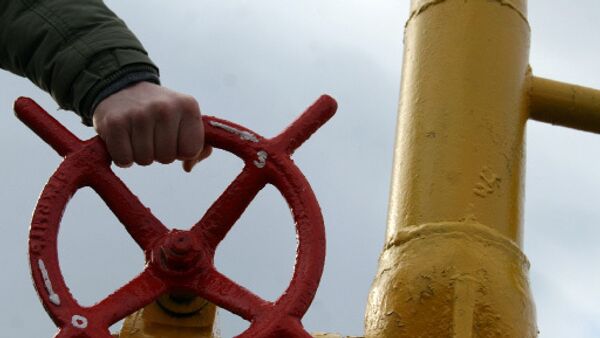MOSCOW. (RIA Novosti economic commentator Oleg Mityayev) - Russia's ambitious plans to diversify its natural gas supply routes to Europe are taking shape. At the end of last week, Sweden and Finland gave the approval required for construction on the Nord Stream gas pipeline to Germany through the Baltic Sea to begin.
On November 10, Russian President Dmitry Medvedev and Austrian Chancellor Werner Faymann discussed a possible agreement on an even bigger gas pipeline project - South Stream. It turns out that in the near future Slovenia is also going to sign an agreement with Russia allowing the pipeline to pass through its territory.
The South Stream project will provide Russian gas to South and Central Europe through a pipeline that runs along the bottom of the Black Sea. Russia's Gazprom and the Italian company ENI are the main partners in the project. Russia and Turkey have recently agreed to allow the pipeline's underwater segment to pass through their exclusive economic zones.
The segment of the pipeline along the bottom of the Black Sea may now link Russia with Turkey rather than Bulgaria, because of the latter's recent demand that bilateral oil and gas agreements with Russia be reviewed.
Beyond the Black Sea, the pipeline will follow two routes - one through Greece and along the bottom of the Adriatic Sea to Italy, and another one through Greece, Serbia and Hungary, to Austria. Russia has signed agreements that will allow the pipeline's construction through the territory of all these countries, with the exception of Austria.
The pipeline is scheduled to be commissioned in 2015. It will have a maximum capacity of 63 billion cubic metres of gas per year.
An agreement with Austria will be more difficult. Austria has been and remains one of the main supporters of the alternative Nabucco pipeline, by which it hopes to reduce its dependence on Russian gas. However, experts maintain that there may be not enough gas to supply Nabucco, whereas the South Stream project will have access to abundant Russian gas. Under the circumstances, Vienna is unlikely to miss the chance of having two pan-European pipelines on Austrian territory.
Problems between Gazprom and the Austrian gas company OMV, two long-standing partners, have made discussions between the two countries more difficult. They have failed to fulfil their agreement on mutual cooperation, but nevertheless are continuing the talks on future cooperation. The summit in Moscow was designed to speed these talks up.
Moscow considers the South Stream project to be a strategic aspect of its energy relations with Austria. Moscow believes that Russia and Austria share the view that the project aimed at diversifying gas supply routes will enhance Europe's energy safety and guarantee the reliable transit of Russian gas to European consumers.
Experts are already working on an intergovernmental agreement for the joint construction of the pipeline's Austrian leg.
Gazprom received Slovenia's support for the project last year, but the talks were also slow, probably because Russian gas supplies to Slovenia are small, and the country also supports the Nabucco project.
It transpired that the Slovenian government made a serious move at the last moment. It agreed to the construction of a segment of the pipeline on its territory. Now the pipeline will reach northern Italy through Slovenia, turning that country into a major transit country. Previously, the plan was to supply northern Italy through Austria, which is the location of Europe's biggest gas hub, in Baumgarten. Now Austria will be the site of the terminal for the other branch of the pipeline.
Slovenia is ready to sign an intergovernmental agreement on the South Stream project with Russia on November 14, this coming Saturday. Russia has reaffirmed its intention to reach an agreement to build a pipeline with a capacity of more than 10 billion cubic metres of gas per year with Slovenia. Gazprom will set up a 50/50 joint venture with Slovenia to this end.
Thus, as a result of the recent talks in Europe, the pipeline will have a third terminal in Austria, in addition to the previously planned terminals in southern and northern Italy.
The opinions expressed in this article are the author's and do not necessarily represent those of RIA Novosti.



